Two-person big boat racing is the next big thing
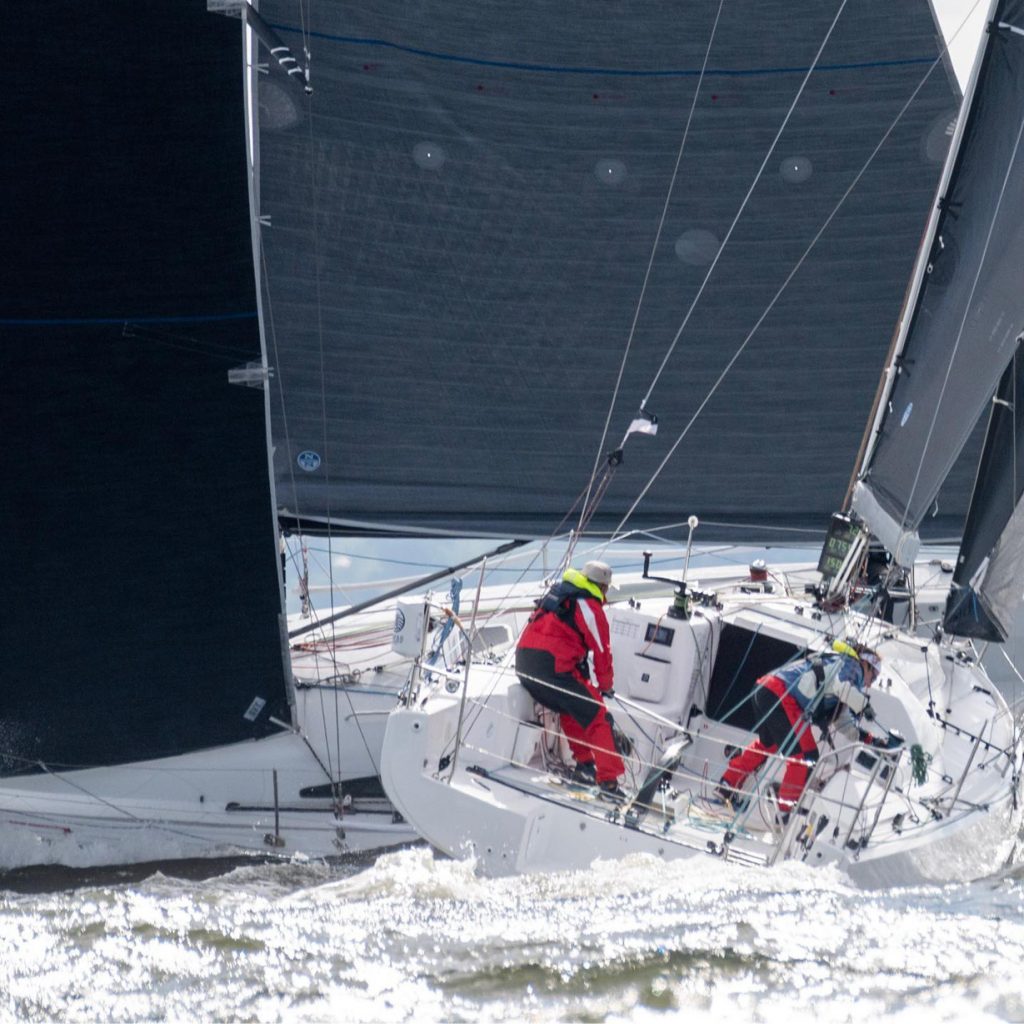
Libby and Rob Alexander in their Jeanneau Sunfast 3300 Byte ducking Ty Anderson and Barry Parkin in Anderson’s Farr 395 Skye during Larchmont Yacht Club’s Edlu Race, September 12, 2020. © Jim Wilson
WindCheck fans may recall that we were very supportive last year of our friend Adam Loory’s Plus One rule, which he conceived to get boats off of their moorings by crewing up with one more person than the tens digit in the length of the craft. Plus One was gaining good traction in the summer of ’19, with Plus One scoring being used by many “big boat” event organizers. But with the global pandemic, that equation, while still useful, seems to have been overtaken by a simpler one: Doublehanded “big boat” racing. We say “big boat” because while some of it could be called coastal and some of it offshore (the traditional province of doublehanded enthusiasm), this summer’s phenomena included day racing as well as shortish, 150-mile distance races. For the western reaches of the WindCheck readership area, it really started in the spring as Adam rallied a bunch of like-minded individuals to get out on the water.
Pandemic Sailing
With organized racing on Long Island Sound shut down this spring, Adam and a group of diehard sailors came together to race doublehanded for five “pick-up” races between May 10 and June 6. Races included three 10- to 20-milers and two distance races, one being a 45-mile Stratford Shoal Race and the final event, a 100-miler that went out to Long Sand Shoal and back. By sailing two-up, crews were able to social distance and eliminate the chance of spreading Covid-19.
In lieu of an entry fee, all sailors donated to the Larchmont/Mamaroneck Food Pantry, which feeds those in need during this time of massive unemployment. Over $6,000 was raised, which made the races doubly rewarding.
A pursuit format was used for the non-distance races, with the slowest boat in the fleet starting first and the rest of the boats later based on how much time they owed the slowest boat for that course length. This way, the order of finish was the results. The PHRF numbers worked well, with boats finishing overlapped on two consecutive weekends.
Participation over the five weeks ranged from eight boats to twenty-four, and the fleet ranged from Chris Schoen’s XP44 Phantom to Barry Purcell’s J/27 Lucidia. Everyone who sailed sent ultra-positive comments, with much kudos coming in after the 100-miler.
That carried on to the rest of the summer. From the Ida Lewis Distance Race to the rescheduled Edlu Race and the Vineyard Race, then moving south to the Annapolis Doublehanded Race, which grew from twenty-one boats in 2019 to thirty-eight in 2020, things decidedly heated up with just two aboard.
Olympic Impetus
The doublehanded phenomenon has been ignited by more than just the pandemic. There is no question that the prospect of a mixed gender, offshore discipline for the Olympic Games in Paris 2024 has created a lot of activity. Oakcliff Sailing in Oyster Bay, NY has been grooming young sailors for this kind of sailing with their fleet of six customized Melges 24s, modified for offshore, overnight doublehanding.
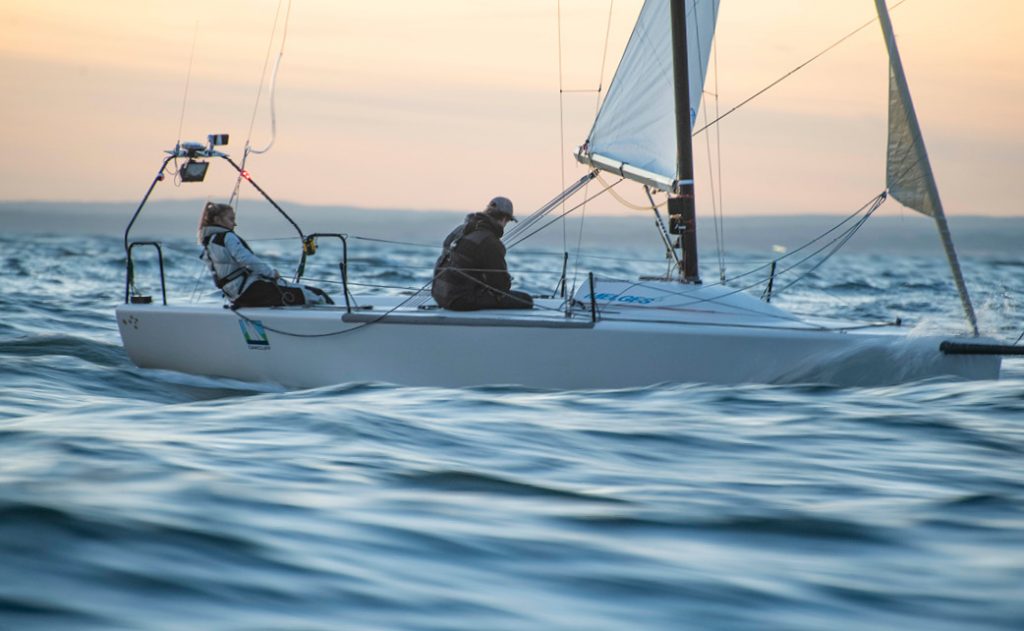
Kate Bjerregaard and Wesley Bright scream downwind at sundown aboard a Melges 24 in Oakcliff Sailing’s Doublehanded Offshore Race. © Francis George/Oakcliff Sailing
And of course Oakcliff hosts their own doublehanded event. The most recent edition, on October 15, had the tightest competition in the event’s history, with the four top boats finishing within forty-two minutes on the Long Island Sound racetrack. Oakcliff Sailing’s second Doublehanded Offshore Race of 2020 was won by Ethan Johnson and Barbara “Baisa” Karpinska in the toughest race yet. Johnson, Oakcliff’s Training Director, also won the inaugural Doublehanded Offshore Race in 2019. Racers saw the most challenging and athletic conditions yet, with winds consistently in the teens and twenties. In second were Cat Chimney and Patrick Gavin-Brynes. Chimney won last year’s event with Johnson. “We mostly made sure to get rest when we could so we could focus on the big picture,” said Gavin-Brynes. “They’re difficult little boats to sail with two people, but we had a great time.”
Another effort that is definitely benefiting from both the surge to shorthanded sailing as well as the desire for an exciting new Olympic discipline comes from some of the most prominent offshore sailors in the U.S., a newly formed group called Offshore Doubles.
“The Mission of Offshore Doubles is to strengthen the community of sailors, events and boat classes who are already making Double-handed offshore sailing the fastest growing segment of our sport,” said founder Larry Rosenfeld. “OffshoreDoubles.org is intended to be a home for everyone interested in doublehanded offshore sailing, from weekend racers to serious campaigns in every country.”
“Our board of advisors already includes luminaries such as Loïck Peyron (FRA), Dee Caffari (GBR), Rich du Moulin (USA), Andrew Pindar (GBR), and Stan Honey (USA), and more advisors are signing on all the time,” Rosenfeld continued. “Within three weeks of Offshore Doubles’ public launch in October, we had more than 1,400 members from sixty-one countries. Fifteen percent of the members are women.”
“For the Olympics, the Offshore Mixed Doubles Event has officially been put forward by World Sailing to the International Olympic Committee (IOC) as part of the slate for Paris 2024. The Offshore Doubles Sailing Association is expected to be asked to represent the discipline at World Sailing on the Olympic Classes Sub-Committee, just as there are representatives from the 49er, Nacra, Laser, IQ Foil and Kite foiling events. They will form a working party within our association to focus on the decisions to be made including ranking, qualifications, boat selection (in concert with the WS Equipment Committee, who makes those decisions), Format of the event and more detailed rules within the guidelines already set forth by World Sailing Committees.”
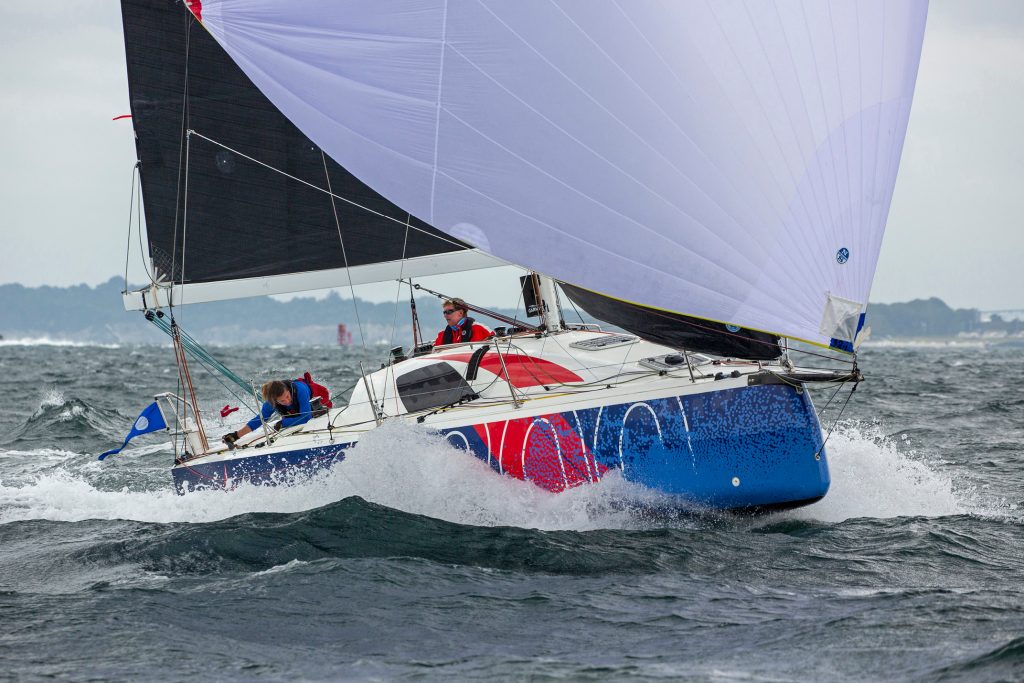
Ken Read and Suzy Leech at the breeze-on start of the 2020 Ida Lewis Distance Race, running a full size A-2 running spinnaker with the small jib (J4) up inside of it. Suzy and Kenny sailed the Jeanneau Sun Fast 3300 Alchemist to victory in the Doublehanded Class. © Billy Black
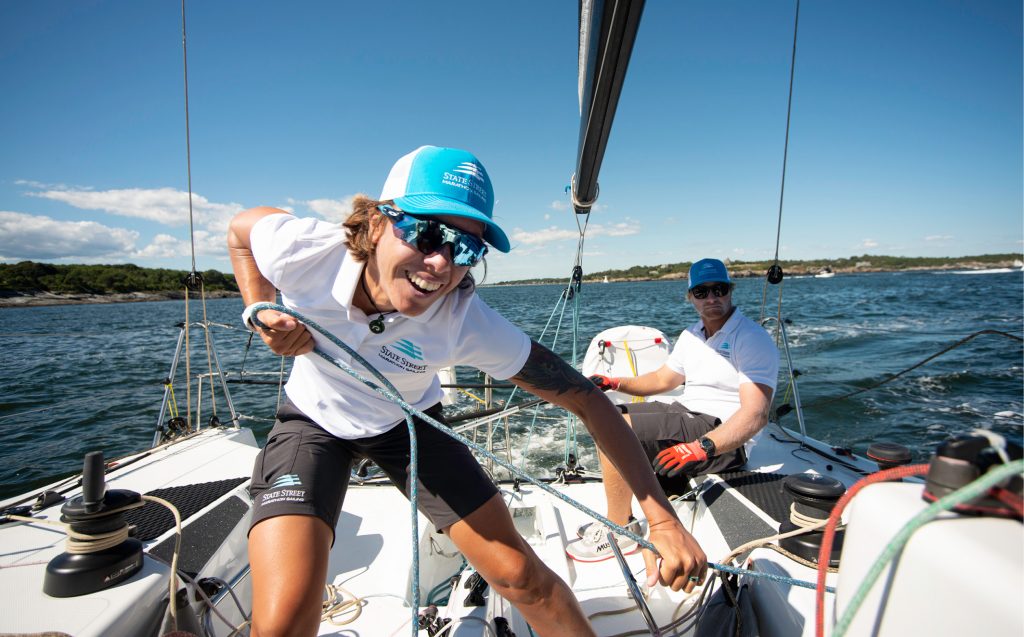
State Street Marathon Sailing’s Francesca Clapcich and Jesse Fielding training on the Beneteau Figaro 3 Fearless in the waters off Newport. The boat is named for the Fearless Girl statue on Wall Street. © Paul Todd/OUTSIDE IMAGES
Taking the early lead in a campaign to represent the United States in Paris is Team State Street Marathon Sailing. Based out of Newport, RI, State Street Marathon Sailing (statestreet.com/values/mixed-marathon-sailing) launched this past summer. Native Rhode Islander and professional sailor Jesse Fielding has teamed with Francesca Clapcich, a two-time Italian Olympian in the 49er FX class and a Volvo Ocean race veteran who is engaged to American professional sailor Sally Barkow. In part because of their early start, Francesca and Jesse are the obvious favorites to represent the U.S. This is not only due to their resumés but also the amazingly good chemistry they have shown out of the gates and during these past six months. Obviously, there is a long way to go, with time enough for other teams to work up to the Olympic level.
The global benchmark, set primarily by the French in this discipline, is still a fairly distant goal. But with a two-boat program, a dedicated Team Manager in Malcolm Gefter of Newport, and the support of Ralf Steiz and Larry Larsen’s United States Merchant Marine Academy Sailing Foundation, not to mention a title sponsor in State Street Bank, they will certainly be the ones to watch.
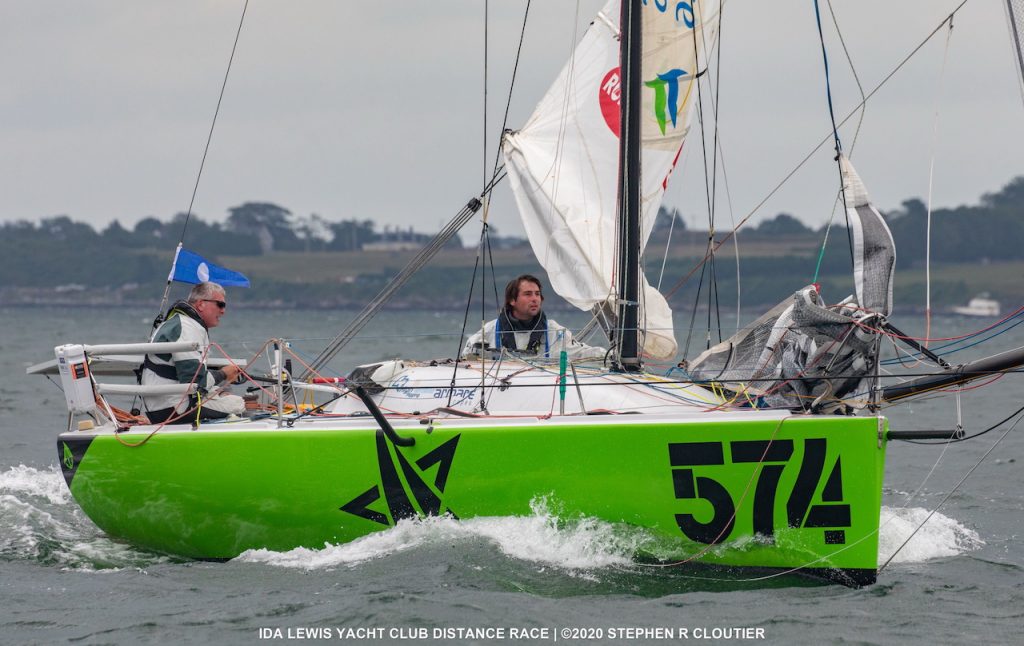
The father and son team of Latimer and Griff Spinney sailed the Mini Transat Prototype Warrior 21 in the 17-boat DH division of the 2020 Ida Lewis Distance Race. © Stephen R Cloutier
From aspiring Olympians to husbands and wives and fathers and daughters, the popularity of doublehanded big boat sailing is primed to explode in the upcoming season. ■




